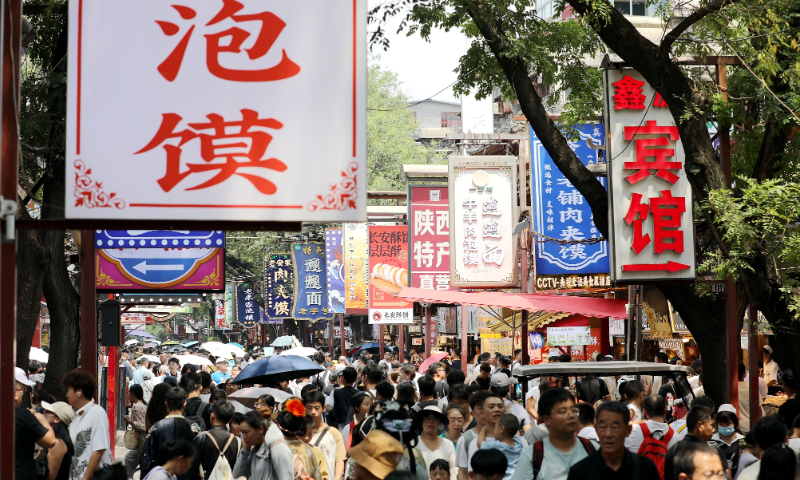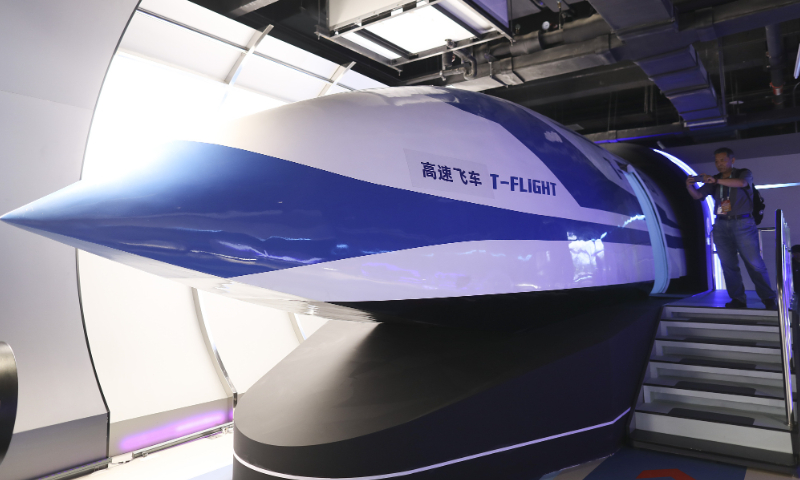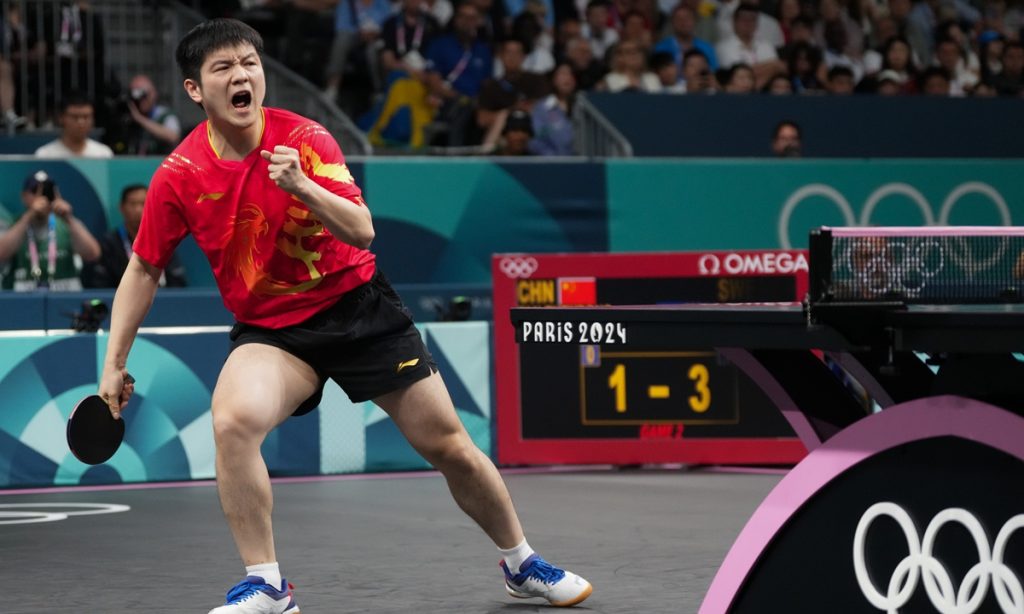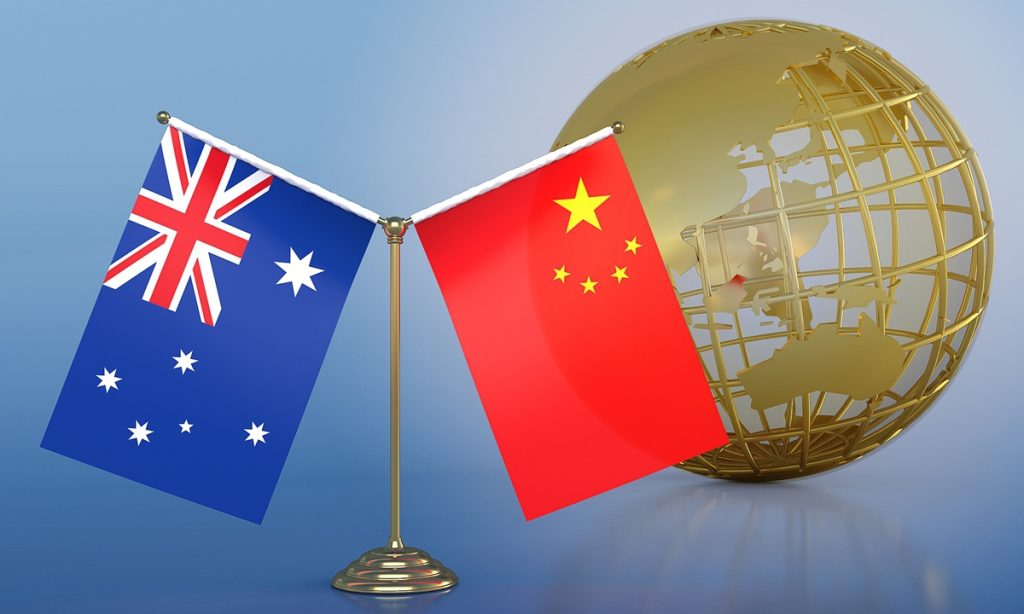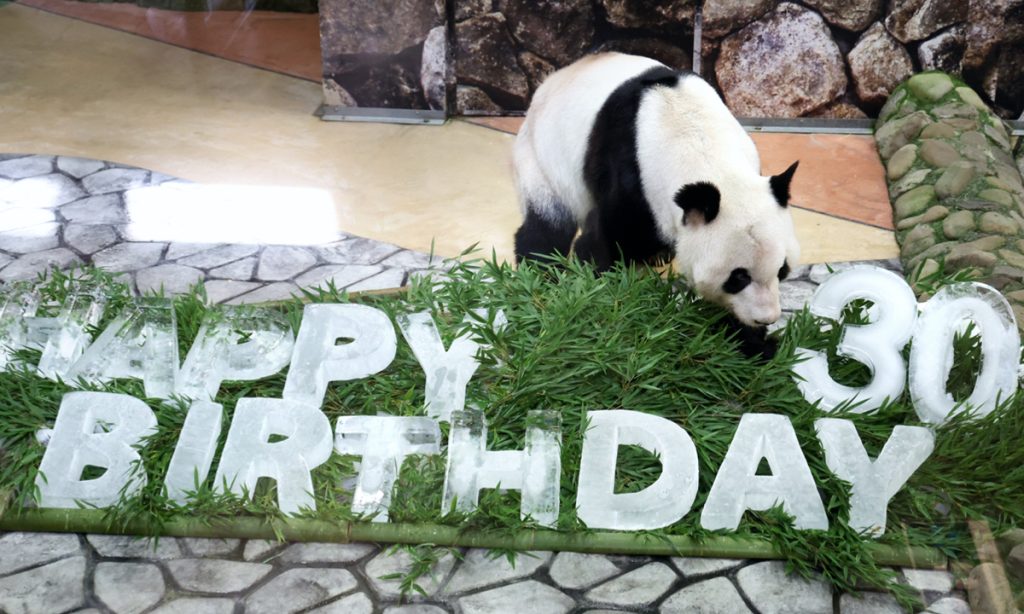Hong Kong tourism chief: New pair of pandas from Sichuan Province to help boost tourism, drive economic growth

With the steadfast support from the central government, Hong Kong's tourism sector is poised for a rapid growth. Through continuous innovation efforts, Hong Kong is expected to become a more attractive tourist destination, providing distinctive travel experiences for visitors, and injecting new vitality into local economy.
The arrival of a new pair of giant pandas from the Chinese mainland is expected to spur Hong Kong tourism-related economy, Kevin Yeung, Hong Kong Secretary for Culture, Sports and Tourism of the Hong Kong Special Administrative Region (HKSAR) government, told the Global Times in an exclusive interview in Hong Kong.
According to Yeung, Hong Kong is now gearing up to welcome the arrival of the new couple of giant pandas aged between 5 and 8 years.
The response came as HKSAR Chief Executive John Lee revealed on July 1 that the central government would be sending a new pair of giant pandas to Hong Kong to mark the 27th anniversary of the city's return to the motherland, adding that the two pandas would arrive within months.
Making full preparations
Earlier on July 7, a team led by John Lee and consisting of representatives from the Hong Kong SAR government and Ocean Park set off to the Dujiangyan Base of the China Conservation and Research Center for Giant Pandas in Southwest China's Sichuan Province to put in place arrangements for the pandas.
Yeung, who joined the visiting team led by Lee to visit the giant pandas in Sichuan, said arrangements were being discussed with the Hong Kong and Macau Affairs Office of the State Council and the National Forestry and Grassland Administration.
Noting that Hong Kong locals are looking forward to the arrival of the giant pandas, Yeung emphasized the importance of meticulous and intensive preparations to ensure the pandas' comfort and the role the pandas will play in bringing the peoples from Hong Kong and the mainland cities closer.
The two pandas are currently adjusting to their new surroundings at the Dujiangyan Base and will undergo a 30-day quarantine, followed by another 30-day quarantine in Hong Kong before they are ready to meet the public. It is important for them to adapt to their new environment in Hong Kong.
Yeung said the national treasured animals would be housed at Ocean Park in Hong Kong where two previous pairs - An An, Jia Jia, Ying Ying and Le Le stayed. They will be the third pair from the mainland.
The first pair, male An An and female Jia Jia, arrived in the city in 1999 to celebrate the "smooth establishment of the One Country, Two Systems" policy. Ying Ying and Le Le were the second pair that the mainland gifted to Hong Kong in April 2007, sparking a "panda fever" drawing a crowd of 35,000 visitors when they made their official debut to the public at Ocean Park.
Ocean Park is making final preparations for the new pair, including enhancing their living space and providing innovative digital and immersive experiences for visitors. Paulo Pong, chairman of Ocean Park, said he is optimistic about the significant economic impact, citing the success of the first pair of pandas in attracting visitors.
Zeng Jiayan, a Hong Kong resident, told the Global Times that she is looking forward to the arrival of the new pair and suggests naming them "Jian Jian" and "Kang Kang." She believes that the panda passion could have a positive impact on the economy and is hopeful for the possibility of panda cubs born in Hong Kong later.
More discussions are underway with the mainland departments to finalize details, such as potential renaming of the pair. "We are now considering the option of giving them more significant names that resonate with Hong Kong community, perhaps, we may invite the public to pick names for the pair," Yeung said.
Giant panda fever
Visiting pandas has been a must-do experience in Hong Kong for visitors since the first pandas arrived in the city in 1999.The pandas have since become beloved idols in Hong Kong, attracting 1.6 million visitors per year.
Hong Kong Ocean Park said that since the first pair of giant pandas arrived at the resort in 1999, they had brought "countless precious and joyful memories to more than 55 million visitors from Hong Kong and around the world," the South China Morning Post reported.
According to the park's latest annual report, the sale of panda-related merchandise and animal interactive programs amounted to HK$600,000 ($77,000) for the financial year ending on June 30 of 2023, an increase of HK$100,000 from two years ago.
The new pandas are expected to further boost Hong Kong's tourism economy, Yeung said.
With the arrival of the new pair, Hong Kong's tourism industry will embrace new opportunities. Meanwhile, the HKSAR government plan to launch a batch of promotional campaigns to arouse public interest in visiting the pandas.
Hong Kong has the opportunity to boost local economy by leveraging the "panda economy," Yeung said, suggesting that the catering and retail industries could see a significant benefit from this initiative.
"Learning from our counterparts in Sichuan, Hong Kong is ready to embrace the 'panda economy,' leveraging the pandas' popularity to enhance tourism appeal and economic growth. We look forward to welcoming the new ambassadors of friendship and culture, fostering a future of shared prosperity, "Yeung said.
Yeung noted that pandas, with their cheerful nature, are ideal as animal ambassadors.
Tourism officials and business insiders in Hong Kong agreed that the arrival of the pandas was a great opportunity for Hong Kong to capitalize on the popularity of the animals. The chairman of Hong Kong Tourism Board (HKTB) Pang Yiu-kai expresses gratitude to the central government for sending another pair of giant pandas to Hong Kong, labeling the pair as "valuable tourism assets."
Timothy Chui Ting-pong, director of the Travel Industry Council of Hong Kong, told the Global Times that the government and Ocean Park should capitalize on the pandas' popularity by developing panda-themed products and related activities. He also proposed ideas such as selling panda-shaped specialty foods and incorporating the logos of pandas into travel itineraries to attract tourists.
Measures introduced by the central government to bolster Hong Kong's financial, cultural, and tourism sectors will further drive local economic growth, Yeung said.
Hong Kong's tourism sector, a key driver of local economy, will greet a significant upswing in visitors. According to estimates by the HKSAR government, the number of visitors to Hong Kong could reach 50 million by 2024, who will greatly boost local GDP, translating to an economic benefit of about 100 million Hong Kong dollars per 1.5 million visitors.
The Chinese mainland has always been the most important and potential source of tourists for Hong Kong, said Yeung. During the past months, to attract more visitors to Hong Kong, the HKSAR government has earmarked more than HK$1 billion to shore up the tourism sector.
With such efforts, the city has welcomed approximately 21 million tourist trips in the first six months of 2024, surging 64 percent year-on-year. Notably, 16.15 million visitors were from the Chinese mainland, according to the HKTB.
"I hope these visitors will recommend the city to others when they go back home," Yeung said.
